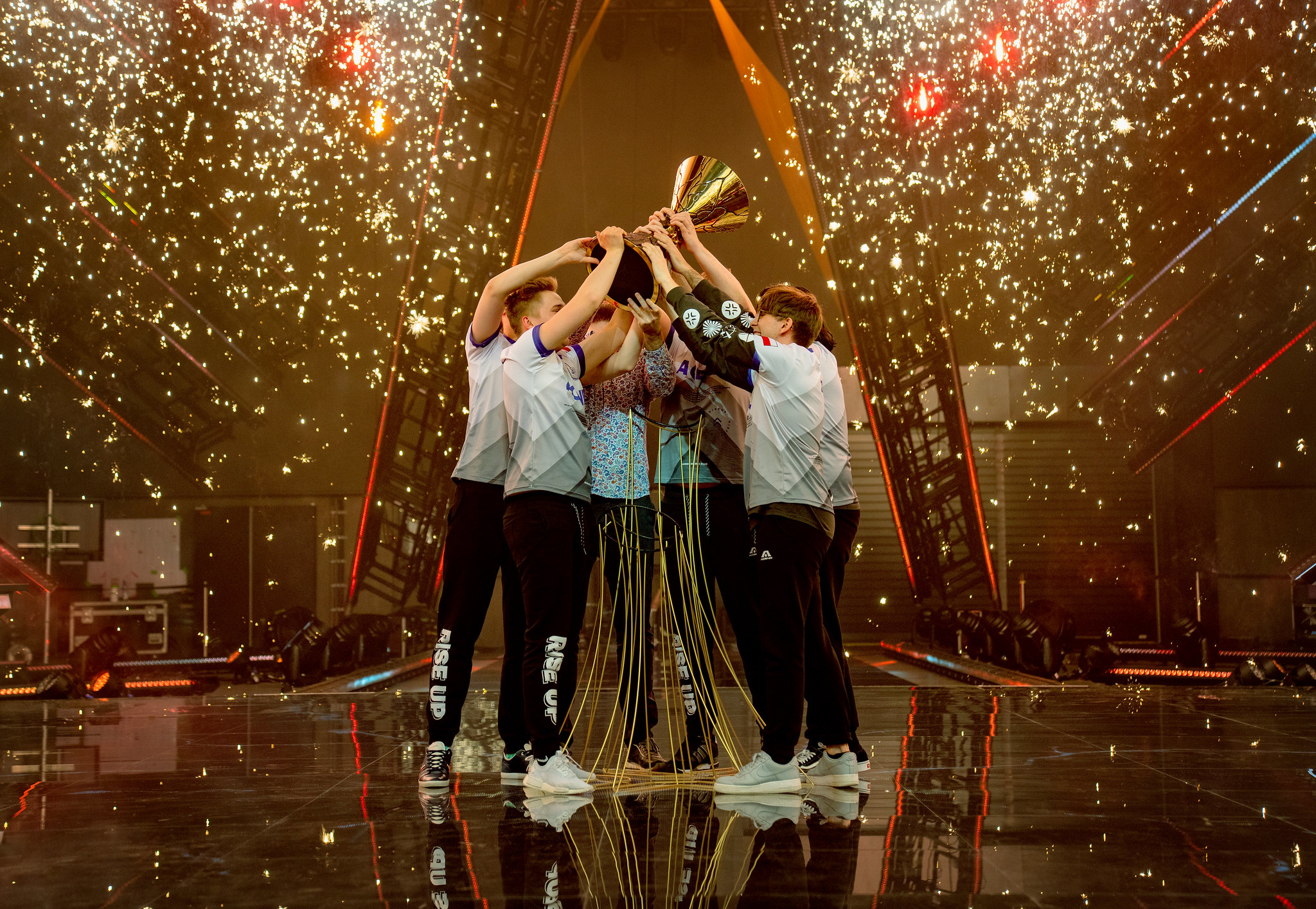
Valorant Esports has become a force to be reckoned with in the competitive gaming realm, captivating both players and spectators worldwide. The game’s unique blend of precise gunplay, tactical abilities, and strategic teamwork has garnered immense popularity within the gaming community.
As the player base continues to grow, so does the intensity and excitement surrounding Valorant tournaments.
For those eager to plan ahead and mark your calendars for upcoming Valorant tournaments, our article on Competitive Esports: Get Ready for the 2023 Valorant Schedule provides a detailed overview of the exciting events to anticipate. Stay informed and ensure you don’t miss out on the electrifying clashes between top-tier teams.
TL;DR: Dive into the captivating world of Valorant Esports tournaments, discover diverse formats, and embrace the exhilarating journey of competitive gaming.
Single-Elimination Tournaments #
Teams compete against each other, knowing that a single loss can spell their untimely exit from the tournament. It’s a nerve-wracking journey, where the stakes are high, and every match carries the weight of elimination.
A Balancing Act: Pros and Cons #
The single-elimination format brings both advantages and disadvantages to the table. On the positive side, it intensifies the drama and creates a sense of urgency, as each team fights tooth and nail to survive. It’s a thrilling experience for both players and spectators, with unexpected upsets and heroic comebacks that keep us on the edge of our seats.
However, it also leaves little room for redemption. A single bad game can dash the dreams of even the most skilled teams, potentially undermining their efforts over an entire season.
To further explore the impact of single-elimination tournaments in Valorant Esports, refer to VALORANT Tournaments Have A Formatting Problem.
Multi-Stage Tournaments #
When it comes to Valorant Esports, the excitement doesn’t stop at single-elimination tournaments. Enter the realm of multi-stage tournaments, where the competition unfolds across different levels, providing a thrilling journey for both teams and fans alike.
The Valorant Champions Tour: A Showcase of Excellence #
One prominent example of a multi-stage tournament in Valorant is the prestigious Valorant Champions Tour. This year-long competitive extravaganza consists of three levels: Challengers, Masters, and the pinnacle of achievement, the Champions stage.
It’s a captivating journey that allows teams to showcase their skills, strategy, and teamwork throughout the season.
From Group Stages to Playoffs #
Within the Valorant Champions tournament, teams face two distinct stages: the Group Stage and the Playoffs.
The Group Stage brings together a collection of teams, usually divided into groups, where they battle it out in intense matches. This stage serves as a crucible, where teams must prove their mettle to advance to the next level. The Playoffs, on the other hand, is the culmination of the tournament, where the top-performing teams from the Group Stage face off in high-stakes matches to determine the ultimate victor.
The Significance of Multi-Stage Formats #
Multi-stage tournaments offer numerous benefits to the Valorant Esports scene. They provide a platform for teams to showcase their skills over an extended period, allowing them to develop strategies, adapt to different opponents, and showcase their growth.
The multi-stage format also ensures that only the most deserving teams progress to the later stages, maintaining a high level of competition throughout the tournament.
GSL Style Groups #
Another intriguing tournament format in Valorant Esports is the GSL (Global StarCraft II League) style groups. This format derives its name from its origins in the StarCraft II Esports scene and has found its way into the competitive landscape of Valorant.
A Dynamic Tournament Structure #
In the Valorant Champions 2022 tournament, the GSL style groups were implemented to add depth and excitement to the competition. In this format, teams are grouped together and compete against one another in a round-robin style.
The top-performing teams from each group then advance to a double-elimination bracket, where the journey towards the championship continues:
It’s a captivating structure that allows teams to face different opponents and showcase their resilience in a variety of matchups.
Strengths and Weaknesses #
The GSL style groups format brings its own set of strengths and weaknesses to the table. On one hand, it provides teams with multiple chances to prove themselves and recover from a potential early setback. It also allows for more diverse matchups, increasing the overall competitiveness of the tournament.
However, this format may require a longer duration to accommodate the round-robin and double-elimination stages, potentially extending the tournament timeline.
Last Chance Qualifiers #
In the ever-evolving landscape of Valorant Esports, there’s always room for redemption and a final shot at glory. Enter the concept of last chance qualifiers, a stage that adds a thrilling twist to the Valorant Champions Tour 2023.
Seizing the Last Opportunity #
Last chance qualifiers serve as the ultimate opportunity for teams to secure their place in the prestigious Valorant Champions tournament. It’s a high-pressure stage where teams who haven’t yet qualified through previous tournaments can compete for a chance to showcase their skills on the grandest stage of all.
The Path to Valorant Champions #
Teams participating in the last chance qualifier stage battle it out against fierce competition, knowing that only a select few will emerge victorious and secure their place in the Valorant Champions tournament. This stage offers teams a final chance to prove themselves, as they navigate through intense matches with their eyes set on the ultimate prize.
Impact and Advantages #
Including last chance qualifiers in the Valorant Champions Tour brings several advantages to the competitive scene. Firstly, it offers teams who may have faced setbacks in earlier tournaments an opportunity to showcase their potential and earn a spot in the prestigious Valorant Champions event. Additionally, it adds an extra layer of excitement and unpredictability to the tournament, as underdog teams fight against the odds for a chance to shine.
Conclusion #
In this article, we have explored the captivating world of Valorant tournament formats, uncovering the diverse structures that shape the competitive landscape of Esports. Valorant offers a rich tapestry of formats to captivate fans, teams, and players alike.
Here’s a summary of the four different tournament formats used in Valorant Esports:
| Format | Description |
|---|---|
| Single-Elimination | Teams are eliminated after losing a single match, creating intense do-or-die battles. |
| Multi-Stage | Valorant Champions Tour consists of Challengers, Masters, and Champions stages, showcasing growth throughout the season. |
| GSL Style Groups | Groups compete in a round-robin style, followed by a double-elimination bracket, offering diverse matchups. |
| Last Chance Qualifiers | Teams compete for a final chance to secure a spot in the Valorant Champions tournament, adding excitement and redemption. |
It’s important to note that tournament formats in Valorant can vary based on the preferences of tournament organizers and the level of the tournament. Each format brings its own strengths and weaknesses, contributing to the excitement and strategy of the gameplay.
As Esports enthusiasts, let’s celebrate the variety of formats in Valorant tournaments and appreciate the meticulous planning and execution that goes into creating thrilling and memorable competitive experiences.
Stay Up-to-date #
To stay up to date with the ever-evolving Valorant tournament scene and never miss a beat, we’ve compiled 6 Tips To Stay Up to Date With Valorant Tournaments. Discover the best resources, platforms, and strategies to keep your finger on the pulse of all the action, allowing you to immerse yourself fully in the world of Valorant Esports.
